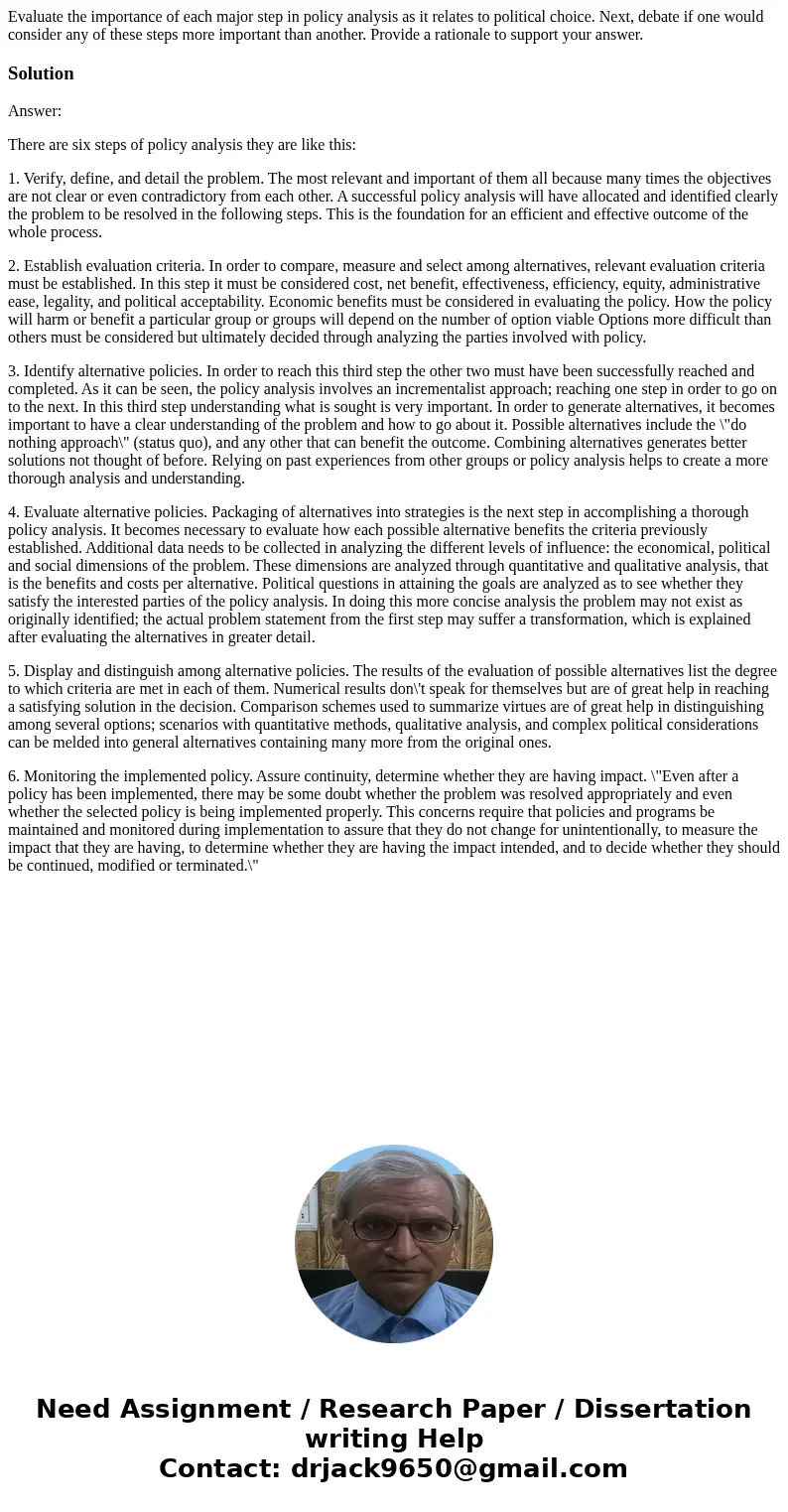Evaluate the importance of each major step in policy analysi
Evaluate the importance of each major step in policy analysis as it relates to political choice. Next, debate if one would consider any of these steps more important than another. Provide a rationale to support your answer.
Solution
Answer:
There are six steps of policy analysis they are like this:
1. Verify, define, and detail the problem. The most relevant and important of them all because many times the objectives are not clear or even contradictory from each other. A successful policy analysis will have allocated and identified clearly the problem to be resolved in the following steps. This is the foundation for an efficient and effective outcome of the whole process.
2. Establish evaluation criteria. In order to compare, measure and select among alternatives, relevant evaluation criteria must be established. In this step it must be considered cost, net benefit, effectiveness, efficiency, equity, administrative ease, legality, and political acceptability. Economic benefits must be considered in evaluating the policy. How the policy will harm or benefit a particular group or groups will depend on the number of option viable Options more difficult than others must be considered but ultimately decided through analyzing the parties involved with policy.
3. Identify alternative policies. In order to reach this third step the other two must have been successfully reached and completed. As it can be seen, the policy analysis involves an incrementalist approach; reaching one step in order to go on to the next. In this third step understanding what is sought is very important. In order to generate alternatives, it becomes important to have a clear understanding of the problem and how to go about it. Possible alternatives include the \"do nothing approach\" (status quo), and any other that can benefit the outcome. Combining alternatives generates better solutions not thought of before. Relying on past experiences from other groups or policy analysis helps to create a more thorough analysis and understanding.
4. Evaluate alternative policies. Packaging of alternatives into strategies is the next step in accomplishing a thorough policy analysis. It becomes necessary to evaluate how each possible alternative benefits the criteria previously established. Additional data needs to be collected in analyzing the different levels of influence: the economical, political and social dimensions of the problem. These dimensions are analyzed through quantitative and qualitative analysis, that is the benefits and costs per alternative. Political questions in attaining the goals are analyzed as to see whether they satisfy the interested parties of the policy analysis. In doing this more concise analysis the problem may not exist as originally identified; the actual problem statement from the first step may suffer a transformation, which is explained after evaluating the alternatives in greater detail.
5. Display and distinguish among alternative policies. The results of the evaluation of possible alternatives list the degree to which criteria are met in each of them. Numerical results don\'t speak for themselves but are of great help in reaching a satisfying solution in the decision. Comparison schemes used to summarize virtues are of great help in distinguishing among several options; scenarios with quantitative methods, qualitative analysis, and complex political considerations can be melded into general alternatives containing many more from the original ones.
6. Monitoring the implemented policy. Assure continuity, determine whether they are having impact. \"Even after a policy has been implemented, there may be some doubt whether the problem was resolved appropriately and even whether the selected policy is being implemented properly. This concerns require that policies and programs be maintained and monitored during implementation to assure that they do not change for unintentionally, to measure the impact that they are having, to determine whether they are having the impact intended, and to decide whether they should be continued, modified or terminated.\"

 Homework Sourse
Homework Sourse